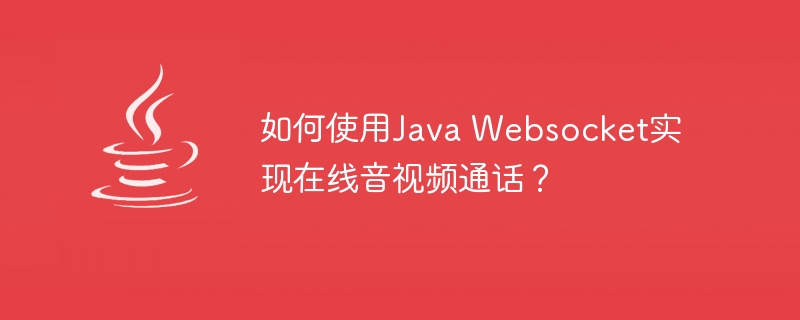

How to use Java Websocket to implement online audio and video calls?
In today’s digital age, real-time communication is becoming more and more common. Whether it is remote collaboration at work or remote communication with relatives and friends at home, real-time audio and video calls have become an indispensable part of people. This article will introduce how to use Java Websocket to implement online audio and video calls, and provide specific code examples.
1. Understand Websocket
Websocket is a new protocol in HTML5, which provides full-duplex communication capabilities between the browser and the server. Compared with traditional HTTP requests, Websocket has lower latency and higher efficiency, and is suitable for real-time communication scenarios.
2. Build a Websocket server
First, we need to build a Websocket server to handle audio and video call requests. You can choose to use the WebSocket API in Java EE, or use third-party libraries such as Jetty. The following is a sample code for setting up a server using the WebSocket API in Java EE:
import javax.websocket.*; import javax.websocket.server.ServerEndpoint; import java.io.IOException; import java.util.HashSet; import java.util.Set; @ServerEndpoint("/video-call") public class VideoCallServer { private static Set sessions = new HashSet<>(); @OnOpen public void onOpen(Session session) { sessions.add(session); } @OnMessage public void onMessage(String message, Session session) throws IOException { for (Session s : sessions) { if (!s.equals(session)) { s.getBasicRemote().sendText(message); } } } @OnClose public void onClose(Session session) { sessions.remove(session); } }
The above code creates a WebSocket server endpoint named/video-calland implements ## The #onOpen,onMessage, andonClosemethods handle the logic of connections, message sending and receiving, and connection closing.
getUserMediamethod to obtain input from the local camera and microphone and send the local media stream to the server through Websocket. At the same time, receive the remote media stream sent by the server and display it on the corresponding
http://localhost:8080/video-callto make online audio and video calls.
The above is the detailed content of How to use Java Websocket to implement online audio and video calls?. For more information, please follow other related articles on the PHP Chinese website!




